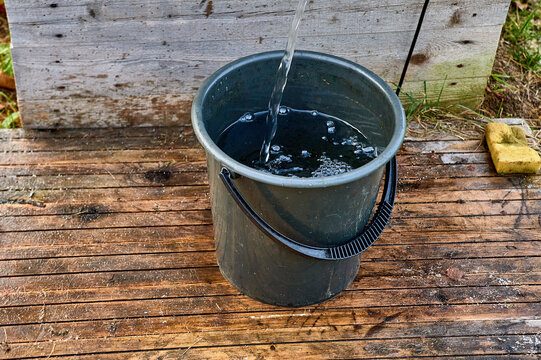The Truth About Chlorine: Why It Doesn’t Belong in Your Garden
Are you using microbe products and seeing no difference? This could be why...
Did you know most of the tap water in New Zealand is treated with chlorine? While chlorine plays an important role in some industries, it’s not that kind to our gardens. If you’re watering with tap water instead of rainwater, filtered water or river water, then it’s worth understanding how chlorine can affect your soil, plants, and beneficial microbes and why removing it can boost your gardens health.
Chlorine is traditionally used as a disinfectant to kill bacteria and pathogens in drinking water. It is also used in swimming pools to keep them free from algae, in household cleaning products like bleach, and it is even used in the manufacture of plastics like PVC or poly vinyl chloride.

Chlorine does not discriminate, it will kill all bacteria and microbes whether they are good or bad. This includes everything from beneficial inoculants like 'Mykos' to harmful pathogens like E. coli. We often hear people complain that they used microbial based products with little to no results - In a lot of cases it can come down to one simple factor: they were watering with chlorinated tap water or using line cleaners that contain high levels of chlorine. The result? The microbes are wiped out before they ever have a chance to colonize the root zone.

In gardening, one of the most common and traditional ways to dechlorinate tap water is by simply letting it sit. Fill a container with water and leave it uncovered for 24–48 hours. During this time, the chlorine naturally evaporates into the air - a process often referred to as “gassing off.” Once the chlorine has dissipated, the water is much safer to use with beneficial microbes and living soil systems.
There’s more than one way to dechlorinate your water. Aside from the traditional “gassing off” method, you can also boil the water, run it through distillation equipment, or use filtration systems such as reverse osmosis. Another quick option is adding vitamin C (ascorbic acid), which neutralizes chlorine on contact.
Our personal favourite - and one of the fastest methods to remove chlorine is by using a chlorine filter. If you’re investing in microbe-based products, this simple step can make a big difference. A good filter ensures the chlorine is removed before it reaches your plants, so that the beneficial microbes can thrive instead of being wiped out.
There’s nothing worse than buying good products and seeing little to no difference. A solid dechlorination setup is a non-negotiable for any organic or outdoor grower. It keeps your garden beds clean, protects the rhizosphere, and safeguards the beneficial bugs and microbes that keep your plants thriving. By stripping chlorine out before it ever hits your soil, you’re giving your microbes the best chance to do their job - and making sure your investment actually pays off in healthy, thriving plants.
If you are looking for a filter then we highly suggest the Dr Green Thumbs - chlorine filter, available here.


Leave a comment